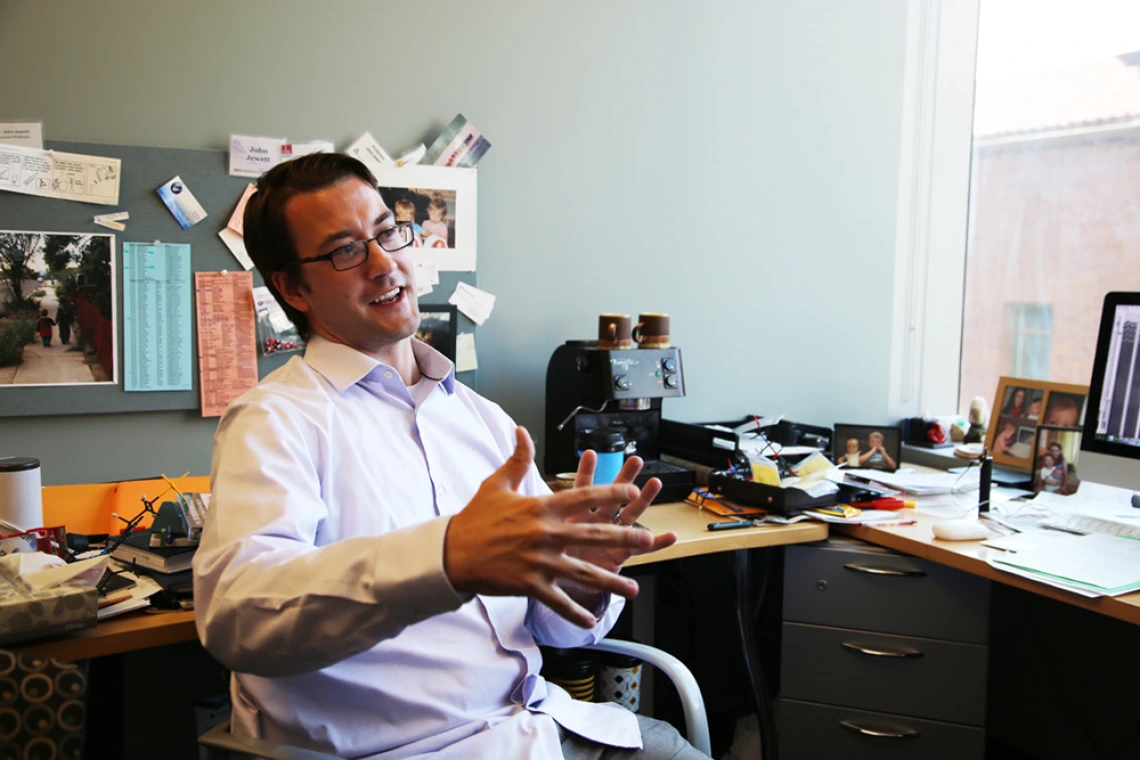Asset Development Program Demonstrates Alignment of UA Inventions to Market Drivers

Faculty at the University of Arizona (UA) conduct approximately $600 million in research each year. Research results are shared with the world through publications and presentations. In many cases during the course of research, investigators conceive inventions. These university inventions are typically science driven, as opposed to market driven, and take many years to mature into commercial products, if at all. Over the past decade or so, university technology transfer has expanded beyond the core activities of invention protection (through securing patents) and transfer (through negotiating and executing license contracts). Today, many universities employ programs to fund “bridging the gap” between good science-based ideas and the development and demonstration of those ideas relative to features that pull the technologies into the market. These programs, often called Proof of Concept, Technology Validation, or Asset Development share a few characteristics in common. Tech Launch Arizona (TLA), the UA the technology commercialization unit, has developed an integrated approach that brings human, technical, market, and financial resources into the asset development process.
While the process of commercializing a university invention can be multi-faceted and complex, it always starts in the same manner – with the reporting of an invention by the researcher/developer to TLA. According to TLA Vice President David Allen, Ph.D., “Given the inventions we receive are based on cutting-edge science, they are typically early stage, representing a ‘first take’ on an intellectual property business asset.” He continued, “Oftentimes such inventions are at a stage of development too early for an innovative adopter of technology to secure through a license.” To further develop such assets, TLA engages people with market and technology expertise relative to the subject invention and they work with the inventors and TLA staff to devise a work plan of experiments, prototype development or other validations that demonstrate alignment of the invention to needs in the market.
To support this asset development, TLA, via its Asset Development (AD) program, has an annual budget dedicated to preparing these unpolished inventions for the market. If a UA technology merits funding, the TLA staff and network of experts work with the inventors to shape a full proposal, which includes activities, a budget and a timeline.
“These funds help advance inventions that aren’t yet ready to attract licensees or investors,” says Doug Hockstad, TLA’s senior director of tech transfer. “In executing an Asset Development plan, we validate an invention's market potential and requirements and ready it for commercialization.”
“In addition,” adds Joann MacMaster, TLA’s director of business development, “these asset development projects can significantly enhance a technology’s viability and readiness for the market, thereby increasing its attractiveness to investors and entrepreneurs interested in building startups around these UA technologies.”
In FY 2015, TLA funded 17 projects for a total of $554,950.
This fiscal year, 2016, TLA was able to almost double its asset development budget to $1.07 million. As of May 4, the office had committed the entirety of that funding to a vast array of projects and researchers, with awards ranging from $10,000 to $97,508; the average award was $42,250.
Among the 28 technologies benefiting from this year’s round of asset development funds are:
- A beating heart patch invented by Steven Goldman, M.D., cardiologist and researcher, and Jordan Lancaster, Ph.D., research fellow, both of the UA Sarver Heart Center.
- A nanopillar electrode for lithium-ion batteries, invented by Palash Gangopadhyay, Ph.D., staff researcher in the College of Optical Sciences.
- An underwater adhesive invented by John Jewett, Ph.D., assistant professor in the Department of Chemistry and Biochemistry, College of Science, and member of the BIO5 Institute(link is external).
- A new breed of Veress needle used for laparoscopic surgery, invented by Peter Rhee, M.D., M.P.H., in the UA Department of Surgery.
- A new assessment for Downs syndrome, invented by Jamie Edgin, Ph.D., assistant professor in the UA Department of Psychology.
- A robotic chiller cleaner, invented by Allen Wall, UA Facilities Management. (Wall passed away in 2014, but TLA has patented his invention and is now actively marketing it.)
- A topical skin product to aid in the production of melanin without exposure to UV radiation, invented by Drs. Victor Hruby of BIO5(link is external) and Minying Cai, both with the Department of Chemistry and Biochemistry, College of Science.
According to Richard Snodgrass, Ph.D., professor in the Department of Computer Science in the UA College of Science and co-founder of Dataware Ventures, Inc.(link is external), the program provided concrete resources to accelerate their startup’s maturation.
“In January 2014 when our Asset Demonstration grant started,” he said, “we had a dissertation in hand that described our micro-specialization technology and some ideas for a product. By the end of that grant six months later, we had a software architecture for that product and an initial prototype, our first full-time employee (working for equity), and, most importantly, a much better understanding of how the product could be used by our customers and the unresolved challenges remaining.”
Contact Tech Launch Arizona for details on becoming a UA inventor and the Asset Development Program.
Image: Assistant Professor John Jewett, Ph.D., in the Department of Chemistry and Biochemistry, received asset development funding for an underwater adhesive he invented. Photo credit: Paul Tumarkin/Tech Launch Arizona.

